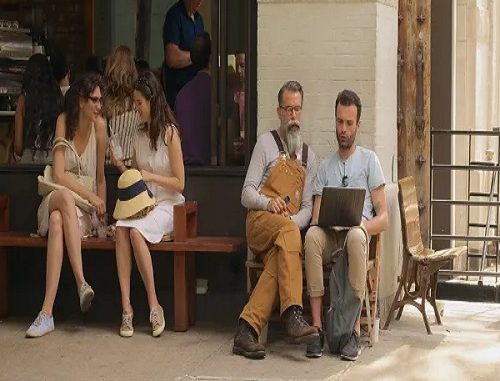
Sharing files between Android and Windows devices has become increasingly common in today’s interconnected world. Whether you want to transfer documents, photos, or videos, finding a convenient and efficient method is crucial. One such solution is Nearby Share, a feature that allows seamless file sharing between compatible Android and Windows devices. At CES 2022, Google announced intentions to bring Nearby Share, its AirDrop competitor, to Windows. It’s been a year, and the business has finally published the Nearby Share app for Windows, as promised. Nearby Share lets Android and Windows users to swiftly and simply share images, videos, documents, files, and connections between platforms. It is currently in beta and supports Windows 10 and 11.
This is great news if you routinely share files or links between an Android phone and a Windows PC. Continue reading to learn how to utilize Nearby Share to share files across Android and Windows. In this blog post, we will guide you through the process of using Nearby Share to effortlessly transfer files between your Android smartphone and Windows computer.

What is Nearby Share?
Before diving into the step-by-step instructions, let’s take a moment to understand what Nearby Share is and how it works. Nearby Share is a wireless file-sharing feature introduced by Google for Android devices running Android 6.0 or later. It utilizes Bluetooth, Wi-Fi, or a combination of both to establish a direct connection between devices. Nearby Share ensures secure and fast file transfers, making it an ideal choice for users who frequently need to share files between their Android and Windows devices.
How to Install Nearby Share on a Windows PC
Nearby Share is currently available in beta on Windows, so you might experience some issues using it. In our time, though we didn’t encounter any strange issues with the app, it did crash a couple of times.
But if you don’t mind this, below is how to get Nearby Share on your Windows PC
- Head to the “Nearby Share page” and click the “Get Started” button.
- When this “downloads the file”, go to the “Downloads folder” and double-click the file to run it.
- Hit Yes on the “User Account Control” prompt to run the installer.
- Wait for the installer to finish downloading and installing the software on your PC, and “hit Close” when it’s done.
How to Set Up Nearby Share on Windows
After installing the Nearby Share program on your computer, you must configure it before you can use it to send or receive files from an Android phone.
Follow these steps below to do this:
- Launch the “Nearby Share app” on your computer. (It’s called Nearby Share Beta from Google).
- If you want to use it with your “Google account“, enter your “Google account credentials” to sign in. Else, hit Use without an account to continue without your Google account.
- Now, you’ll be asked to “set a name” for your PC. This name is how your PC will be visible to others on the network.
- If you’re using “Nearby Share” with a Google account, select “Contacts under Receiving” to make yourself visible to only those in your Google Contacts. Else, if you aren’t signed in, set the device visibility setting to Receive from everyone to make your PC visible to everyone on the network.
How To Enable Nearby Share on Android
To start using Nearby Share, you first need to enable it on your Android device. Follow these steps:
- Accessing device settings: Open the Settings app on your Android device by either swiping down from the top of the screen and tapping the gear icon or finding the Settings app in your app drawer.
- Locating and enabling Nearby Share: In the Settings menu, scroll down and look for the “Google” or “Connected devices” option. Tap on it and navigate to the “Nearby Share” settings. Toggle the switch to enable Nearby Share.
- Adjusting visibility and device name settings: Within the Nearby Share settings, you can customize your device’s visibility and name. You can choose to make your device visible to “All contacts” or restrict it to “Some contacts” for added privacy. Additionally, you can change your device’s name, which is how it will appear to other devices when sharing files.
How to Enable Nearby Share on Windows
Once you have enabled Nearby Share on your Android device, you need to activate it on your Windows computer. Follow these steps:
- Checking Windows version compatibility: Nearby Share is available on Windows 10 version 1803 (April 2018 Update) or later. To check your Windows version, press the Windows key + R on your keyboard to open the Run dialog box. Type “winver” and press Enter. A window will appear displaying your Windows version. If it is older than version 1803, consider updating your system.
- Activating Nearby Share in Windows settings: Open the Settings app on your Windows computer by pressing the Windows key + I on your keyboard or searching for “Settings” in the Start menu. In the Settings menu, navigate to “System” and then “Shared experiences.” Toggle the switch to enable Nearby Share.
- Adjusting visibility and device name settings: Within the Shared experiences settings, you can configure your device’s visibility and name. Similar to Android, you can choose to make your device visible to “Everyone nearby” or limit it to “My devices only.” Additionally, you can change your device’s name to easily identify it when sharing files.
How to Use Nearby Share to Transfer Files Between Android and Windows
After you’ve installed Nearby Share on your Windows 10/11 PC, you can begin sharing files with an Android phone. But before, here are a few things you should be aware of:
- Since Nearby Share uses Bluetooth and Wi-Fi for transferring and receiving files, make sure to turn on Bluetooth and Wi-Fi on both your Android phone and Windows PC.
- If you’re connected to a Wi-Fi network, ensure that both devices are connected to the same network. Also, it’s better to have both of them use the 5GHz channel, as it offers faster transfer speeds.
- Nearby Share transfer doesn’t require you to be connected to a Wi-Fi network to transfer and receive files. Just make sure the Wi-Fi and Bluetooth are turned on, and Nearby Share will automatically pick the right protocol.
Share Files From Android to Windows Using Nearby Share
To share a file or a link from your Android phone to a Windows PC, first ensure that your desktop is visible on the network. Navigate to the Nearby Share Settings tab on your PC and select Everyone or Contacts. After that, proceed as follows:
- Open whatever “file, document, folder, link, or Wi-Fi password” you want to share on your Android phone.
- Click the “Share” button and select “Nearby Share” from the share menu.
- Wait for a few seconds until you see your “Windows PC’s name” appear on the “Nearby Share card“, and tap on it.
- Go to your desktop and accept the “request” by hitting the “Accept button“.
- Depending on the size of the file and the medium of transfer, your file will now be transferred to the Windows PC. It will be downloaded automatically and saved to the downloads folder on your computer.
- However, you can modify it in the options if you like. Simply hit the settings icon in the Nearby Share app, then tap the Change button next to the Save received files to option, and select the location where you wish to save files in the future. Finally, click Change to preserve your settings.
Share Files From Windows to Android Using Nearby Share
Transferring files from a Windows PC to an Android phone is as simple as sharing files from an Android phone with Nearby Share.
Follow these steps to transfer files from your Windows PC to your Android phone:
- Select the “files or folders” you want to share, right-click on an item, and select “Nearby Share“. Or, open the “Nearby Share app” and drag and drop the items you want to share.
- Click on the “Android device name” that appears in “Nearby Devices” list on the app.
- Go to your “Android phone” and hit “Accept” to start receiving the files.
Once the files are downloaded, you can find them under the Download folder or directory on your phone.
Troubleshooting Nearby Share Common Issues
While Nearby Share generally works smoothly, you may encounter some issues along the way. Here are a few common problems and their troubleshooting steps:
- Connectivity issues between devices: Ensure that Bluetooth and Wi-Fi are enabled on both your Android and Windows devices. Also, make sure they are within close proximity to establish a strong connection.
- Incompatibility errors and troubleshooting steps: If you encounter compatibility issues, ensure that both your Android device and Windows computer meet the system requirements for Nearby Share. Update your operating systems if necessary and restart your devices to resolve any temporary glitches.
- Performance optimization tips for smoother file transfers: To improve file transfer speed, make sure that your devices have sufficient battery life and are not running multiple resource-intensive apps in the background. Clearing cache and closing unnecessary apps can also enhance performance.
Other Tips and Considerations using Nearby Share
As you explore using Nearby Share, keep the following tips and considerations in mind:
- Privacy and security considerations when using Nearby Share: Nearby Share uses a combination of Bluetooth and Wi-Fi to establish direct connections between devices. However, ensure that you are using trusted networks and exercise caution when sharing files with unknown or untrusted devices.
- Limitations and restrictions of Nearby Share: Nearby Share may have some limitations, such as device compatibility requirements, file size restrictions, and limited support for older operating systems. Be aware of these limitations to ensure a smooth sharing experience.
- Exploring alternative file-sharing methods if Nearby Share is not suitable: If Nearby Share doesn’t meet your requirements or is not available on your devices, there are alternative file-sharing methods to consider, such as cloud storage services, email attachments, or third-party file-sharing apps.
Conclusion
With Nearby Share, sharing files between Android and Windows devices has never been easier. By following the step-by-step instructions outlined in this blog post, you can enjoy seamless and efficient file transfers. Remember to enable Nearby Share on both your Android device and Windows computer, and take advantage of its convenience and security. Say goodbye to cumbersome cables and complicated file transfer methods, and embrace the simplicity of Nearby Share for all your file-sharing needs.
Leave a Reply